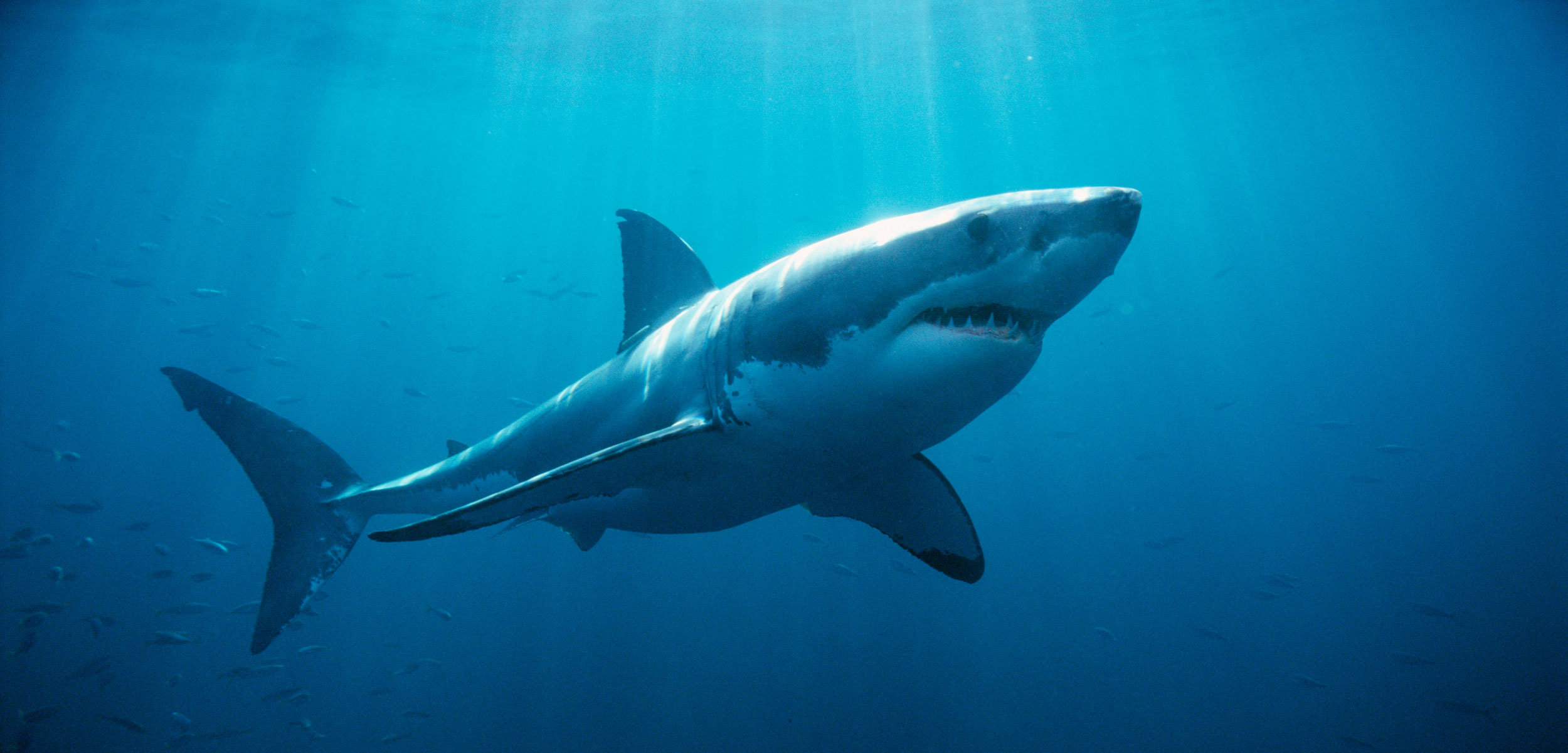The Deep-Sea Adventures of Lydia the Great White Shark
Tracking data shows a great white shark diving deep into the open ocean.
Article body copy
On a July morning in 2013, a great white shark named Lydia was swimming across the North Atlantic Ocean. As the sun rose over the waves, she made an abrupt descent into the abyss. She dove down, deeper and deeper, until she reached her destination a kilometer beneath the surface. Lydia swam to the very bottom of the mesopelagic, a cold, twilight realm where little light penetrates, yet life still teems. One estimate suggests as much as 95 percent of the world’s fish live in the mesopelagic. Their swarming masses are punctuated by larger animals such as cephalopods and, apparently, great white sharks.
While the depth of Lydia’s dive was impressive, it was the means by which she got there that has added fresh insights into our understanding of shark ecology, and how migratory predators survive in the relative desert of the open ocean.
With location, temperature, and depth sensors surgically attached onto Lydia’s dorsal fin, a team of scientists led out of the Woods Hole Oceanographic Institution (WHOI) followed the 900-kilogram, 4.5-meter-long shark for six months, recording when and where she surfaced and garnering information about each dive when she disappeared. By cross-checking her behavior against tracked signatures of physical ocean conditions, the researchers discovered she was diving in a way they’d never seen before.
Lydia—a mature shark that has swum more than 75,000 kilometers since she was tagged in 2013—was repeatedly diving straight through the core of an oceanographic feature known as an eddy. Whipped up by larger currents, these swirling vortices are like distinct water islands amid the regular conditions in oceans. Anti-cyclonic eddies, which spin clockwise, are warmer than the surrounding waters. Cyclonic eddies spin counterclockwise, and are colder. Eddies also gather up and shift the distribution of nutrients and life, such as plankton, which have little control over their own mobility. And it seems that sharks, or at least this shark, are using eddies to venture into the bountiful deep.
A visualization shows the prominent, rotating eddies that regularly occur within the Gulf Stream current. Video by NASA’s Goddard Space Flight Center
Lydia dove often, both day and night, though where she dove varied with the environment. In the open ocean, Lydia was three times more likely to descend in warm anti-cyclonic eddies than cold cyclonic ones. The researchers suspect she was using the relatively warm water to expend less energy maintaining her temperature, which made diving, hunting, and ascending more efficient, and allowing her more time at greater depths. When crossing the Gulf Stream current, where eddies are highly energetic and even warmer than normal, the shark spent almost half of her time diving in the mesopelagic.
Of course, without visual verification, it’s not certain she was diving to feed, though it would make sense: most deep dives occurred during the day, when the mesopelagic is dense with life.
The research is significant says Kim Holland, a marine biologist from the University of Hawaiʻi at Mānoa who was not involved in the study. It suggests apex predators such as sharks have an intimate awareness of the oceans, and are able to exploit their natural features for their own benefit. He adds that sophisticated electronic tagging is playing a major role in our growing understanding of marine animals.
“This is really the tip of the iceberg,” agrees Dennis McGillicuddy, an oceanographer at WHOI and one of the study’s authors. “Who knows what the future will hold when we get more of these tags out on sharks and other large pelagic animals,” he says. “I suspect we’re going to learn a lot more.”
Meanwhile, industrial fishing companies are tuning in to the abundance of life in the mesopelagic, eyeing the fish for use as fish meal. One potential target is the bristlemouth, a bioluminescent fish thought to be the most common vertebrate on the planet. McGillicuddy says the study adds weight to the idea that complex food webs would be affected by mesopelagic fishing, which should inform future conservation considerations. “Obviously while there’s great temptation to harvest those resources, we need to be able to do so in a sustainable way.”

